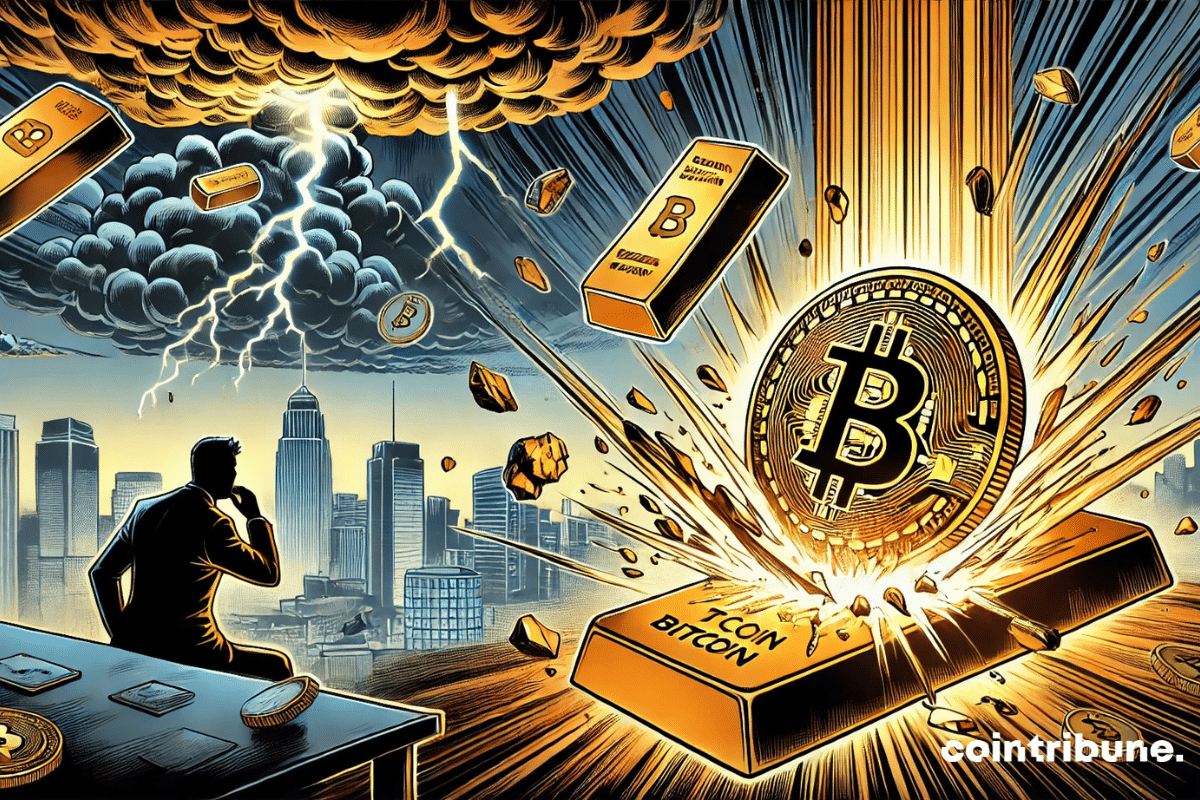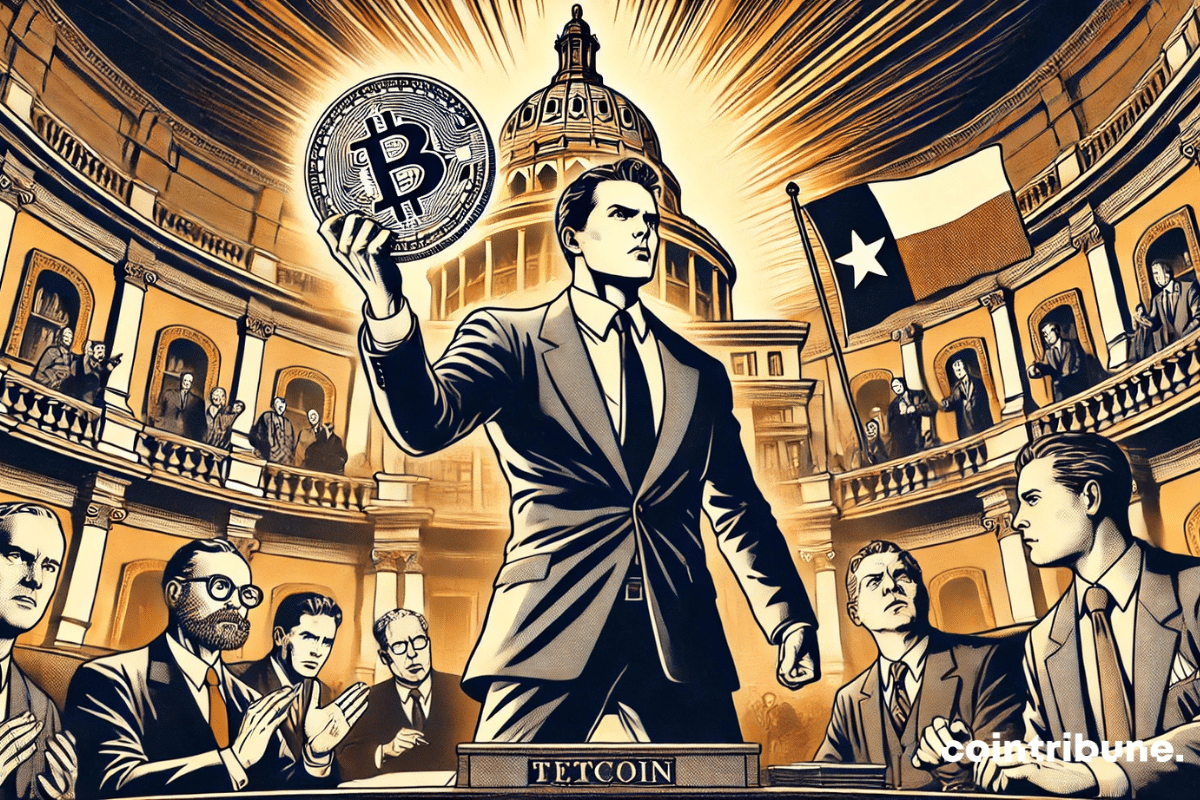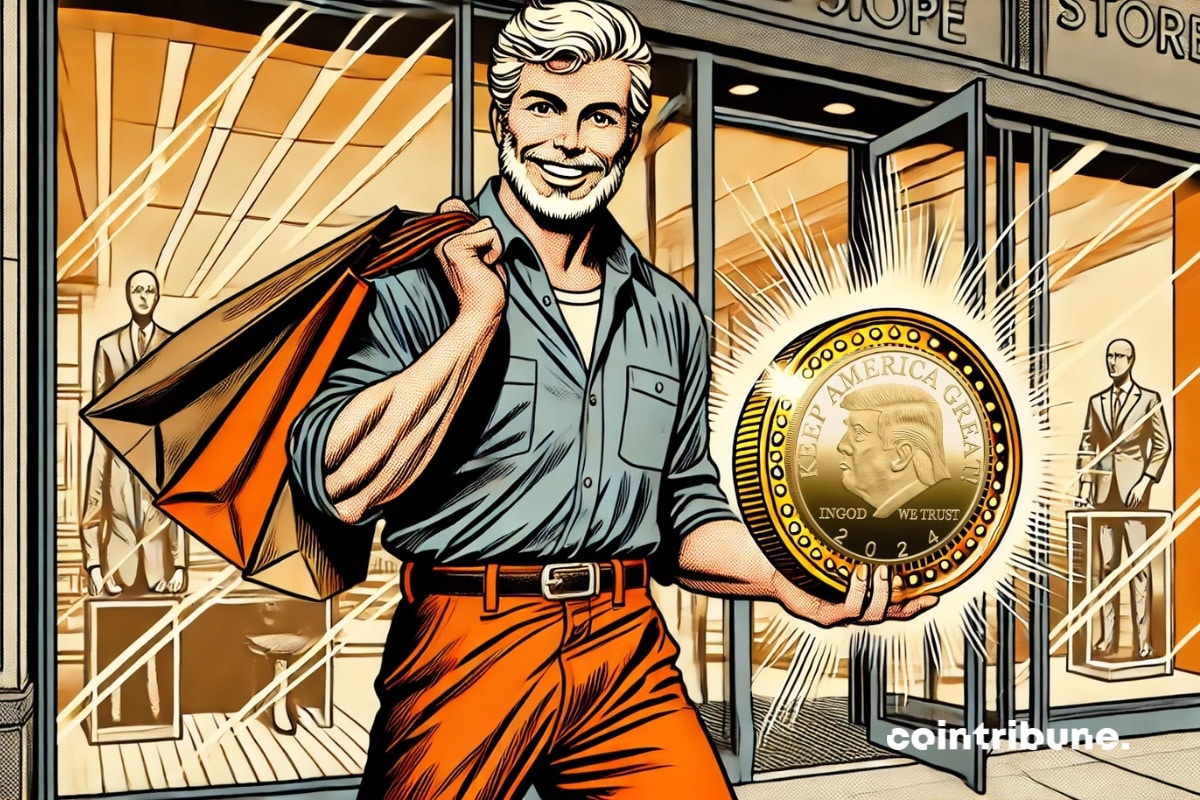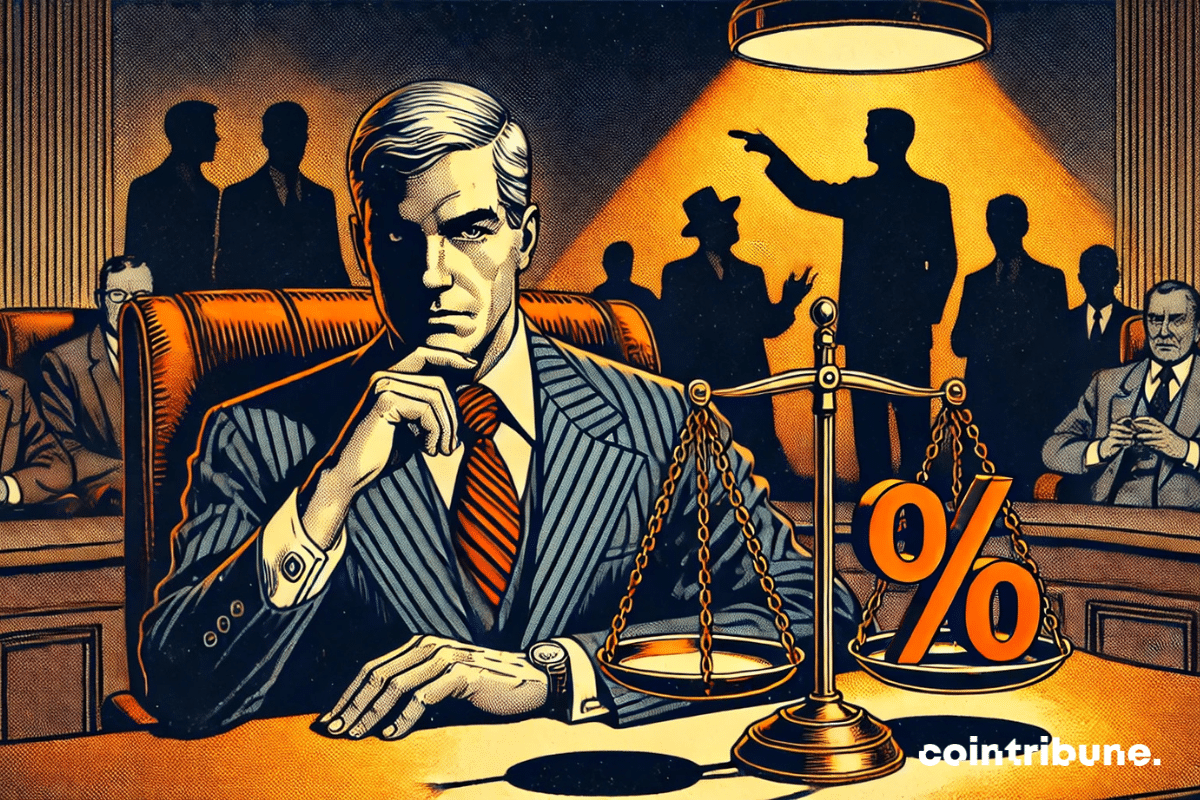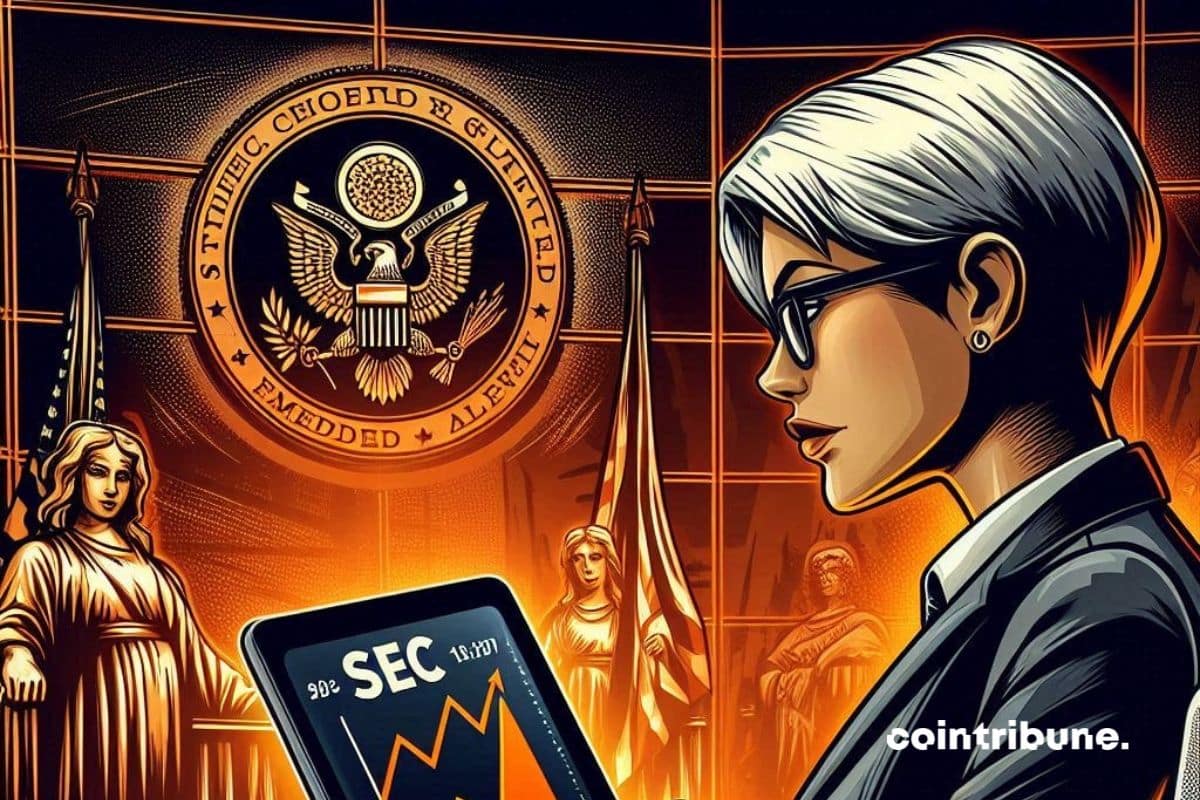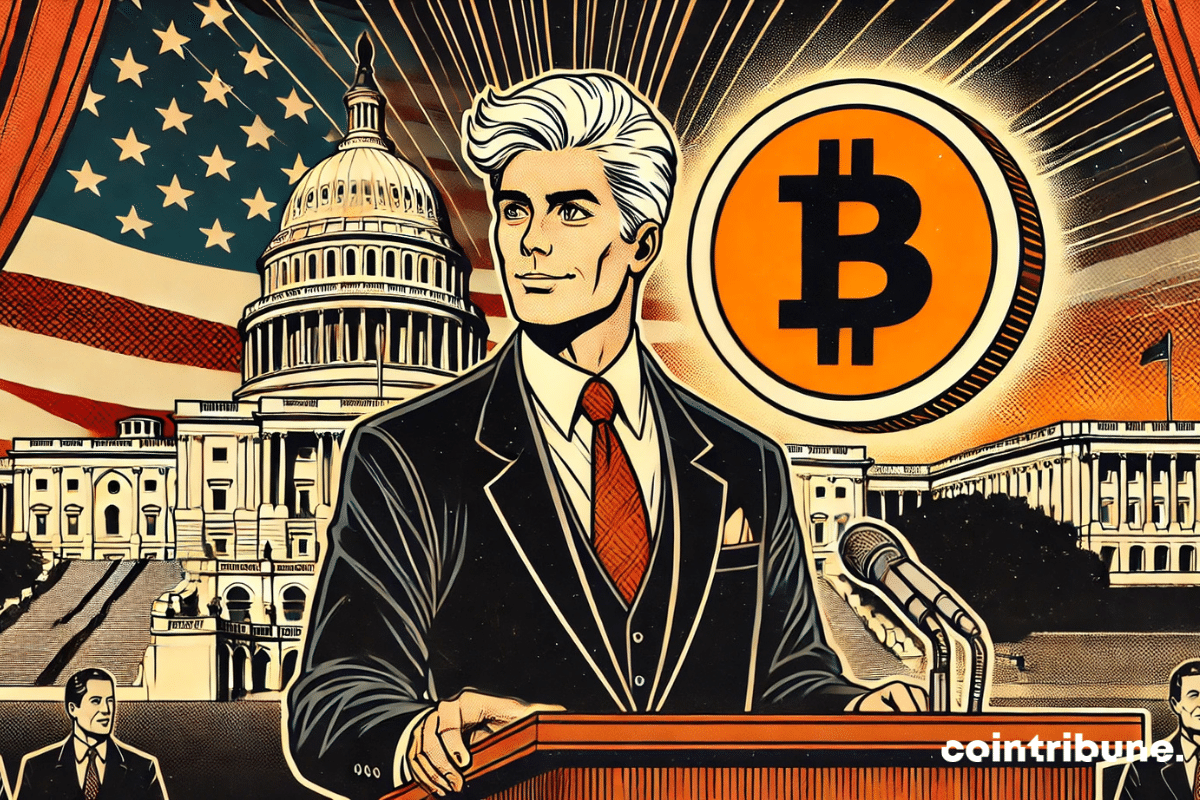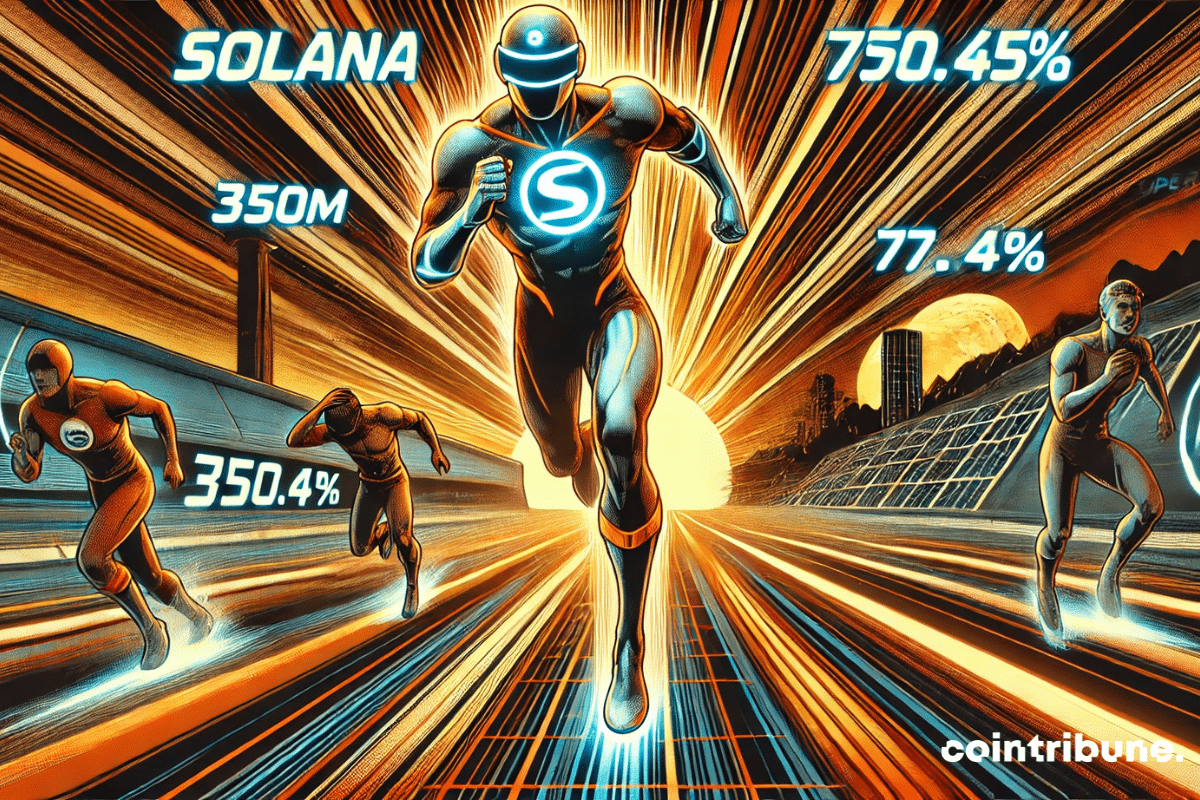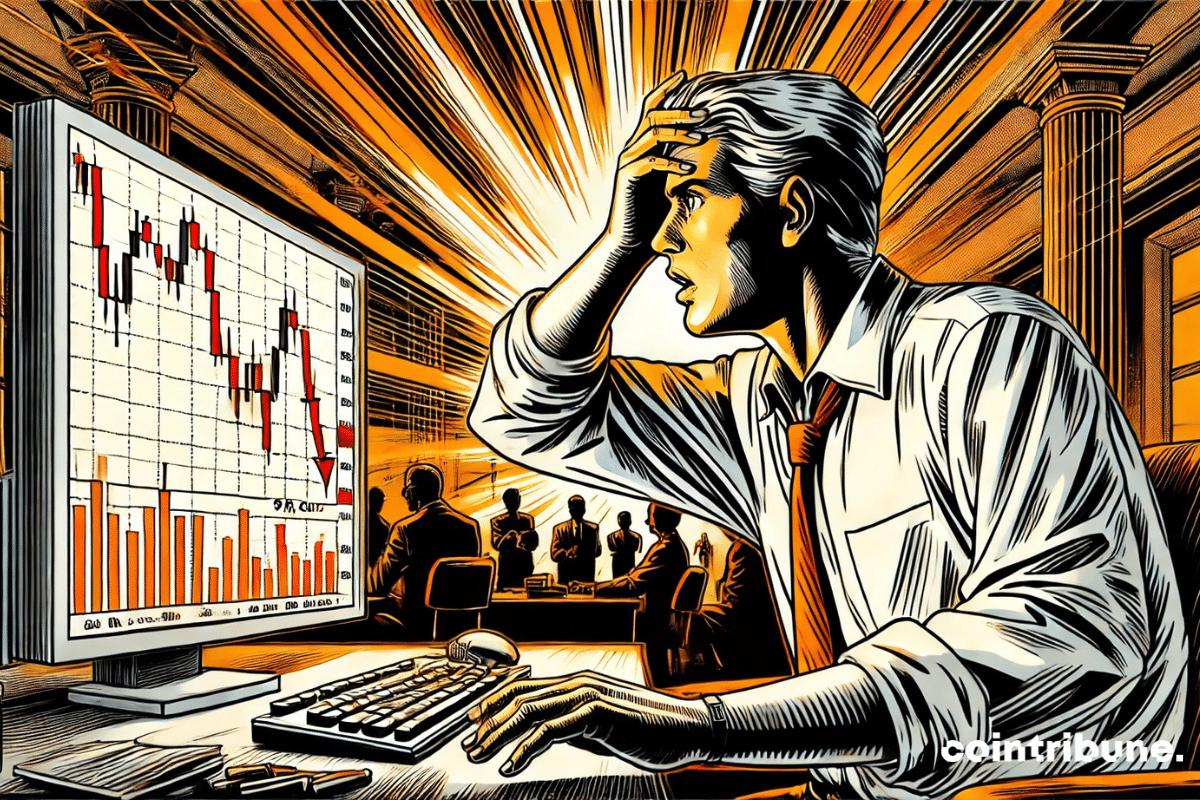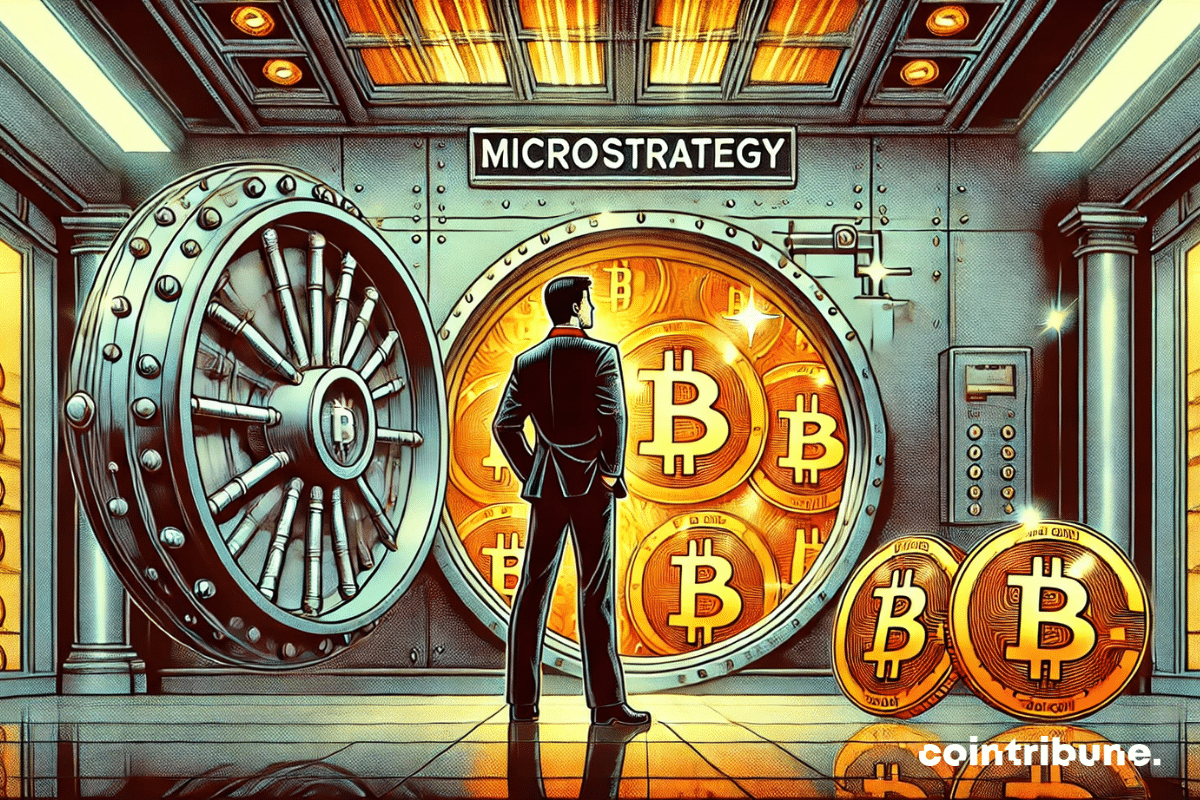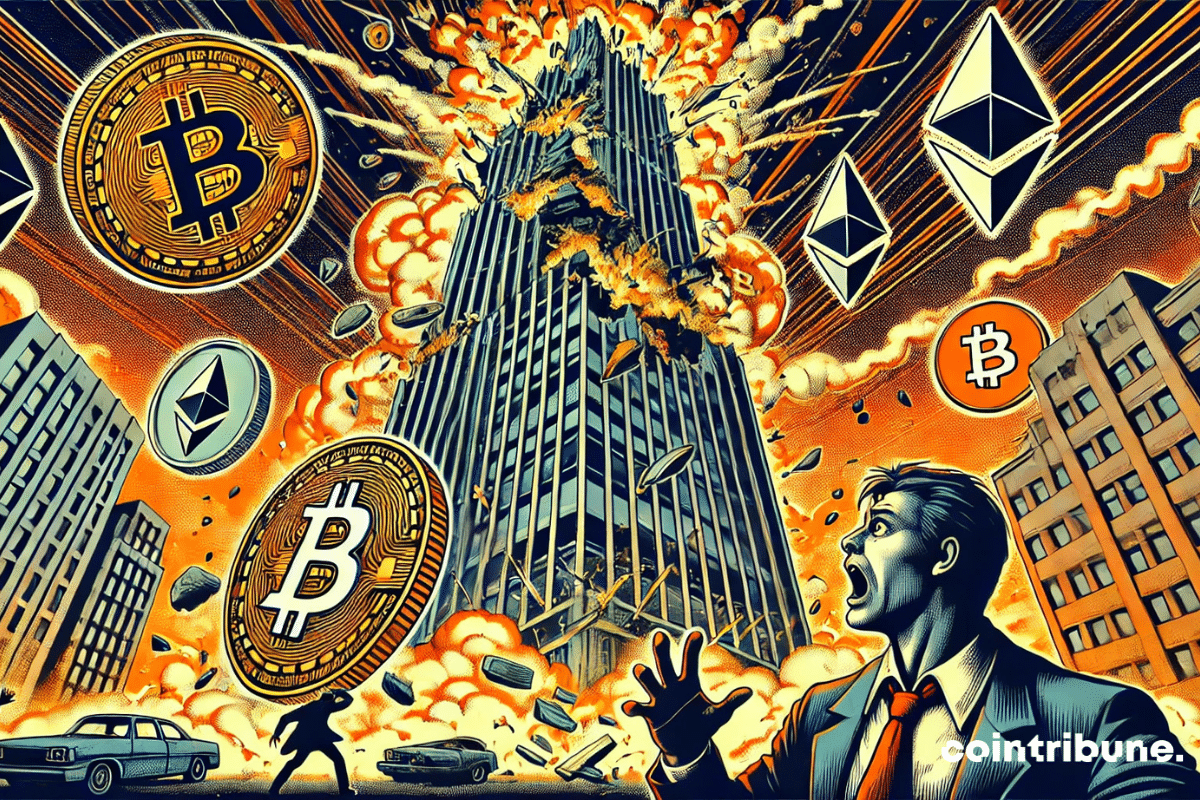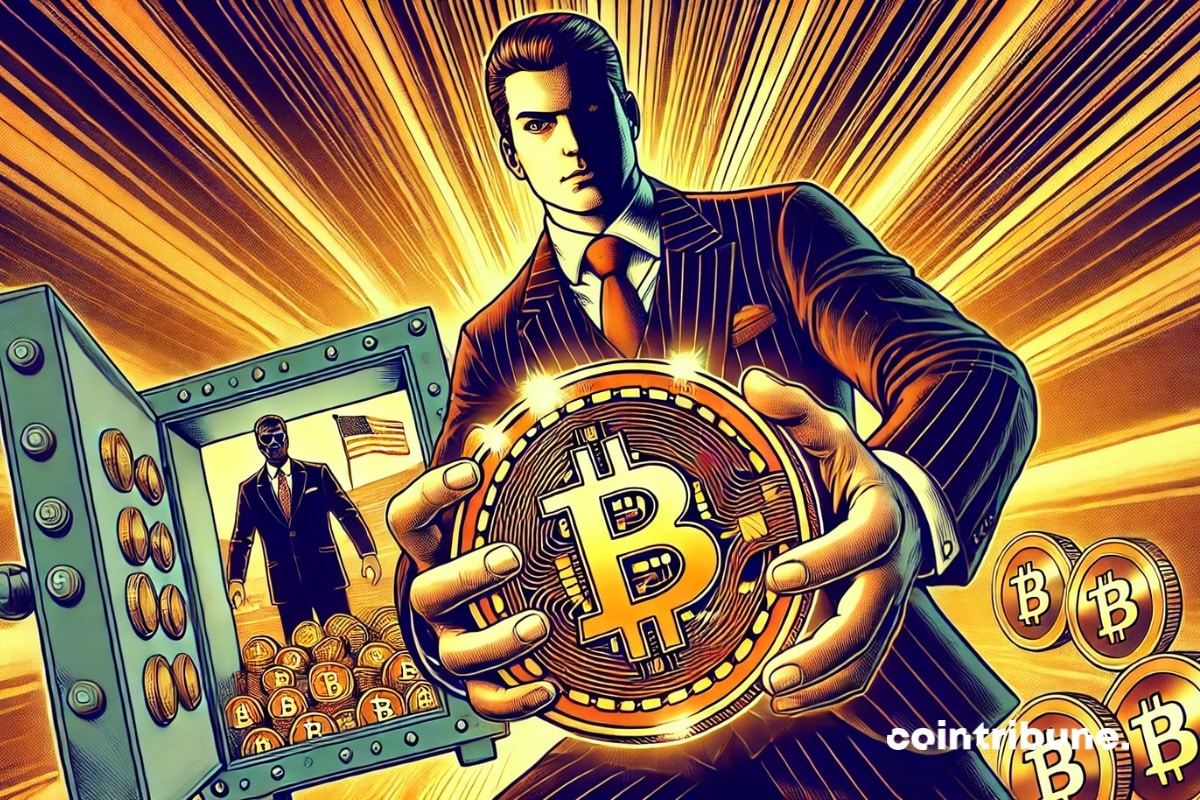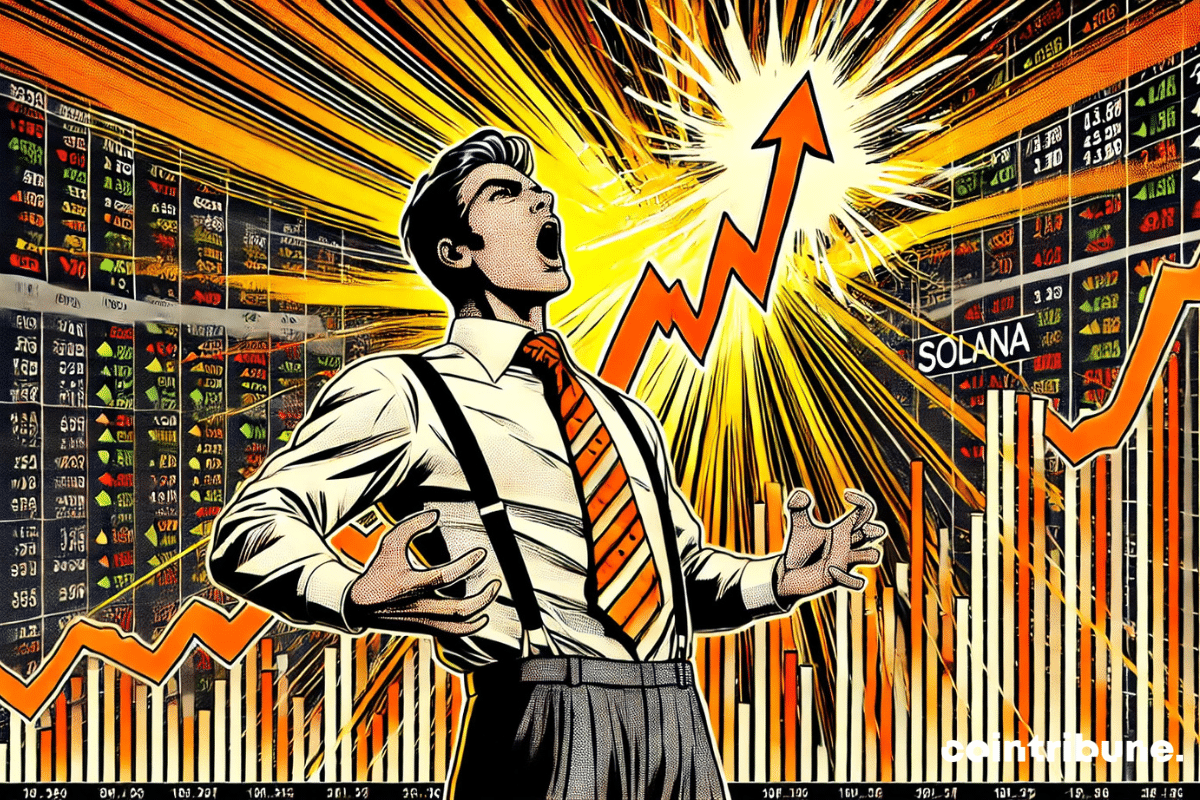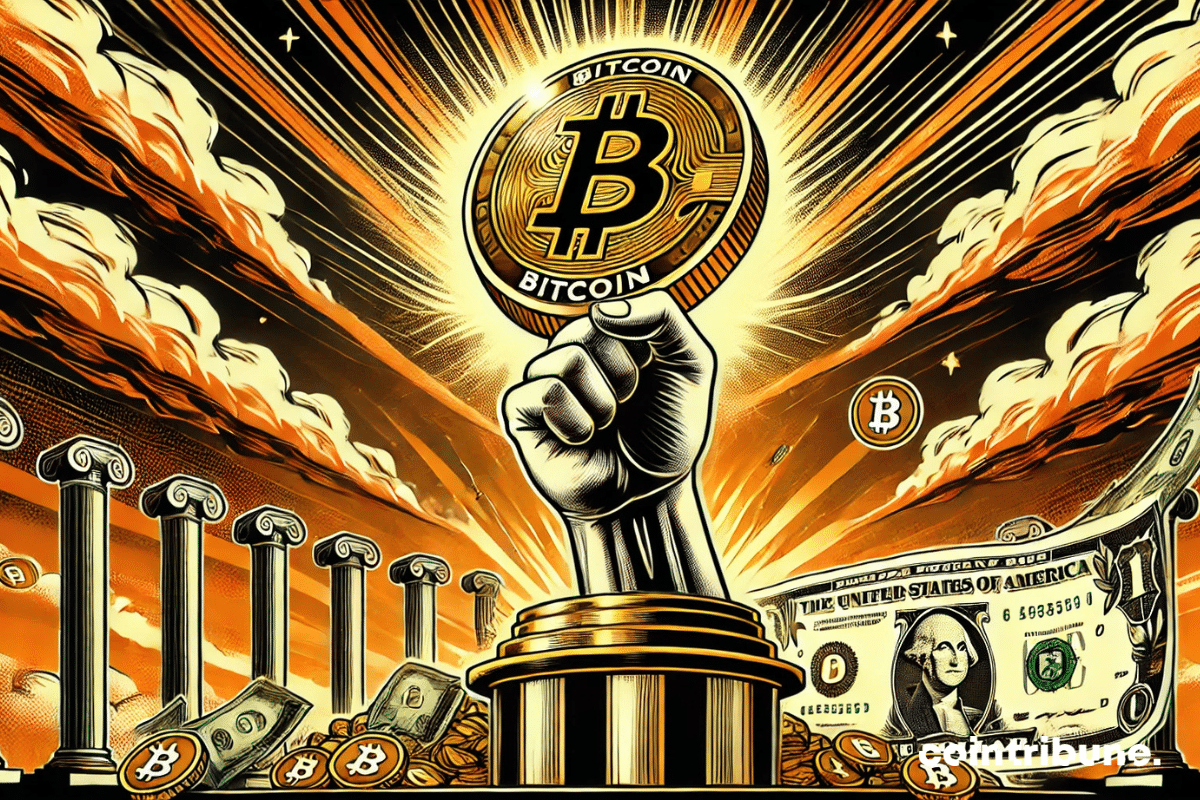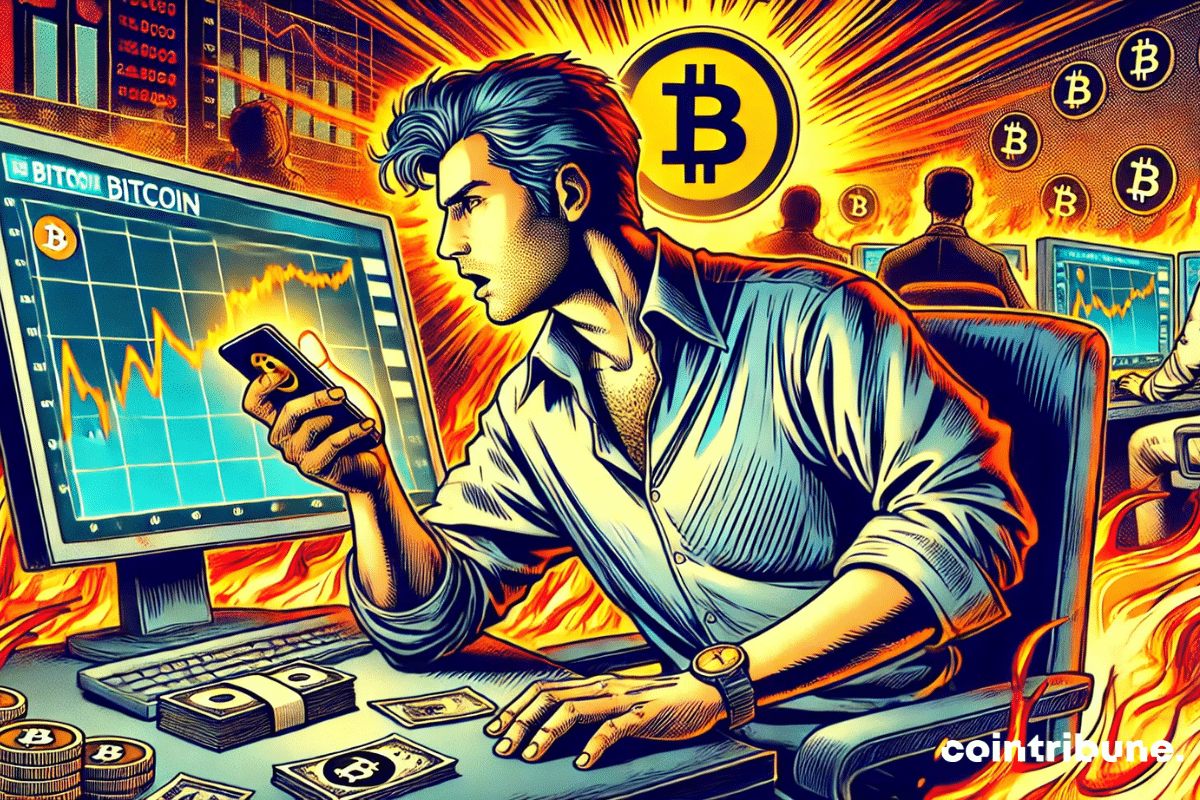Bitcoin, despite its 10% increase since January, could face a major correction as gold outperforms with annual gains of 20%. This inverse dynamic between the two assets raises concerns about an imminent reversal in the crypto market.
Crypto News
The Lone Star State could become the first American state to officially establish a bitcoin reserve. Dan Patrick, the Lieutenant Governor of Texas, has included this project among the legislative priorities for 2025, marking a decisive milestone in the institutional adoption of cryptocurrencies in the United States.
The President of the United States, Donald Trump, continues to expand his footprint in the crypto space by integrating his official memecoin, $TRUMP, into the sale of merchandise. Holders of $TRUMP can now purchase items such as sneakers, watches, and perfumes using this token. This initiative marks a significant evolution for the 47th president, who previously referred to the value of cryptocurrencies as "based on thin air."
Every decision made by the American Federal Reserve shapes the global economy and influences the cost of credit, the direction of investments, and the stability of financial markets. At its first meeting of 2025, the Federal Open Market Committee (FOMC) chose to keep interest rates unchanged, despite Donald Trump's persistent calls for monetary easing. This status quo caused a contrasting shock wave: stock indices, from Nasdaq to Dow Jones, closed lower, while Bitcoin surged by 2.5%. Thus, this movement underscores once again the unique trajectory of cryptocurrencies, which seem to diverge from traditional economic logics.
Monetary tensions are intensifying as the BRICS accelerate their quest for independence from the US dollar. This dynamic is upending global economic strategies and prompting major powers to rethink their financial reserves. Currently, the Trump administration has announced the creation of a "strategic crypto stock," reigniting an explosive debate between bitcoin supporters and those of XRP. Some see it as an official recognition of the role of these assets in monetary policy, while others question which cryptos will actually be integrated. Beyond technological rivalry, this confrontation reveals major geopolitical stakes: the choice of the BRICS between bitcoin, XRP, or another crypto could reshape the balance of global reserves and redefine power dynamics among states.
The governor of the Czech National Bank, Aleš Michl, recently proposed an ambitious plan to invest up to 7 billion dollars in Bitcoin (BTC) as part of the bank's reserve diversification strategy. This proposal, which will be presented to the bank's board of directors on January 30, 2025, could make the Czech National Bank the first European central bank to invest in Bitcoin.
On January 28, 2025, the Cboe BZX exchange filed new ETF applications focused on Solana for Bitwise, VanEck, 21Shares, and Canary Capital. Following a disappointing outcome in 2024, these initiatives aim to revive the SEC's review, marking a significant milestone for crypto adoption in traditional financial markets.
Nvidia stumbles, Bitcoin shudders. When 600 billion goes up in smoke, the flagship crypto feels the change in the wind. And if the golden future of BTC were to emerge from the ashes of tech?
The crypto market alternates between spectacular surges and abrupt corrections, and Solana is no exception. After a tumultuous start to the year marked by heightened volatility, the SOL token has lost 17.2% in just three days, bringing its price down to $235. This drop, although brutal, does not solely summarize the situation of the ecosystem. Behind the decline in price, contrasting signals are emerging. On one hand, on-chain activity is collapsing with a 40% drop in transaction volumes, weakening major platforms like Orca (-62%) and Meteora (-45%). On the other hand, Total Value Locked (TVL) soars by 27%, surpassing Ethereum and BNB Chain, thanks to platforms like Raydium and Binance Staked SOL. Thus, investors are still hesitant to bet on a true rebound. Three key factors will determine whether Solana can reverse the trend and return to its historic highs.
The Arizona Senate takes a historic step towards institutional adoption of cryptocurrencies with the advancement of a bill allowing the state to invest up to 10% of its public funds in bitcoin. This initiative could trigger a wave of similar adoption in other U.S. states.
Bitwise, a crypto asset management company, recently filed an application with the Securities and Exchange Commission (SEC) to launch an exchange-traded fund (ETF) based on Dogecoin (DOGE). This initiative marks an important step for Bitwise, which had already registered a Dogecoin trust in Delaware earlier this month.
Tuttle Capital Management recently filed for the launch of 10 leveraged crypto ETFs, including the memecoins $TRUMP and $MELANIA, created by current U.S. President Donald Trump and First Lady Melania Trump. These leveraged ETFs aim to amplify the daily returns of the underlying assets, thus offering potentially high profit opportunities but also increased risks for crypto investors.
The U.S. Senate approved on January 27 the appointment of Scott Bessent, a hedge fund manager and staunch advocate of cryptocurrencies, to the strategic position of Secretary of the Treasury. This choice, backed by Donald Trump, marks a potential turning point in the economic and crypto policy of the United States.
When Solana plays with billions, memes lurking, and stablecoins in abundance, the giants waver. Crypto turns heads and algorithms.
The recent drop of Bitcoin below the symbolic threshold of $98,000 has caught the attention of investors. On-chain data, however, reveals a remarkable absence of panic selling, suggesting a temporary correction rather than a major trend reversal.
As Bitcoin remains at the heart of discussions about the future of the global financial landscape, MicroStrategy is ramping up its commitment and announcing a new ambitious initiative. The American company plans to raise funds through an offering of 2.5 million preferred shares, a mechanism designed to finance the acquisition of new bitcoins and bolster its operations. This move, driven by a clear strategy of diversification around cryptocurrencies, comes in a context of declining revenues and shrinking profit margins. By choosing Bitcoin as the cornerstone of its treasury, MicroStrategy reaffirms its long-term vision and raises questions about the potential risks and repercussions of this bold model.
Ripple, the crypto service provider, recently announced that it has obtained money transmission licenses (MTL) in the states of New York and Texas. This strategic expansion enhances Ripple's presence in the United States, bringing the total number of its MTL licenses to over 50 in the country.
Bitcoin (BTC) started the last week of January with a significant drop below $100,000, reaching its lowest point in 10 days. Even though the queen of crypto slightly rebounded to $100,000, investors are navigating an environment of increasing tension! Between market volatility and uncertainties from the Federal Reserve... Here are 5 things to know about Bitcoin this week.
The world of cryptocurrencies has experienced a major upheaval, marked by the spectacular rise of XRP, the token of Ripple. Usually dominated by Bitcoin and Ethereum, market attention has shifted at the end of 2024 towards this cryptocurrency, which has seen its market capitalization soar by 246% in just three months. This significant result reflects a growing institutional adoption, as well as the technological advancements of the XRP Ledger network, which facilitates the expansion of the NFT and decentralized finance sectors. Thus, this ascent raises questions about the future role of XRP in the crypto ecosystem and its ability to maintain this extraordinary momentum.
Cryptos are once again captivating attention as 2025 promises to be rich in upheavals. Thus, Bitcoin, Solana, and XRP, close to their historical peaks, could enter a phase of accelerated growth thanks to three major engines. Between large-scale political initiatives, favorable economic developments, and a resurgence of investor confidence, these dynamics intertwine to reshape the crypto landscape. These potential transformations, supported by unprecedented global conditions, could define a new chapter for the crypto industry.
The explosion in the number of altcoins is worrying crypto market experts. With over 36.4 million tokens in circulation today, compared to just 3,000 in 2017-2018, the question of the viability of a new altseason is becoming increasingly pressing.
Between a double peak and a guaranteed plunge, Bitcoin drifts, while Ethereum, a shipwreck of altcoins, sinks into the murky waters of a declining market.
Brutal drop of Bitcoin below $99,000 this Monday, January 27, 2025. This sudden decline reflects investors' concerns over the impending FOMC decisions and technological developments in China, raising worries in the cryptocurrency market.
Michael Saylor, co-founder of MicroStrategy, recently reported a possible imminent new acquisition of Bitcoin (BTC) this January 27, 2025, as the crypto falls below $99,000. According to the data, MicroStrategy currently holds 461,000 BTC, valued at around $48.4 billion, surpassing US government reserves. Is a rivalry on the horizon?
In 2025, bitcoin continues to break impressive records. With a growing number of wallets holding at least $100 and unprecedented network security, the cryptocurrency shows signs of massive adoption and increased trust. Discover the notable achievements of BTC this year.
Altseason dances on a tightrope: a robust Bitcoin and declining dominance, that's the recipe to ignite alternative cryptos. But nothing is ever simple.
The excitement surrounding the TRUMP memecoin and the prospects of spot ETFs is pushing Solana (SOL) to new heights. With record volume on DEXs and strong institutional accumulation, the asset shows promising technical signals for a potential 25% increase.
Elon Musk, the famous entrepreneur and innovator, is currently exploring the use of blockchain technology to reduce the expenses of the U.S. government. This initiative is led by the Department of Government Efficiency (DOGE), a new entity he oversees, created to modernize federal operations and maximize the efficiency of the U.S. government.
Global economic uncertainties and growing distrust in fiat currencies are disrupting investors' choices. Robert Kiyosaki, author of the famous Rich Dad Poor Dad, warns of the fragility of the US dollar, weakened by rampant inflation and deemed irresponsible monetary policies. According to him, bitcoin, gold, and silver are emerging as reliable safe havens in this crisis context. Through two economic principles, Gresham's law and Metcalfe's law, Kiyosaki provides insights into the growing role of bitcoin as a credible alternative and a tool for preserving value against the depreciation of traditional currencies.
The purchasing frenzy of short-term Bitcoin holders, combined with the constant accumulation by long-term investors, creates a particularly favorable context for 2025. This dynamic could keep the BTC price above 100,000 dollars in the coming months, according to the latest analyses.
